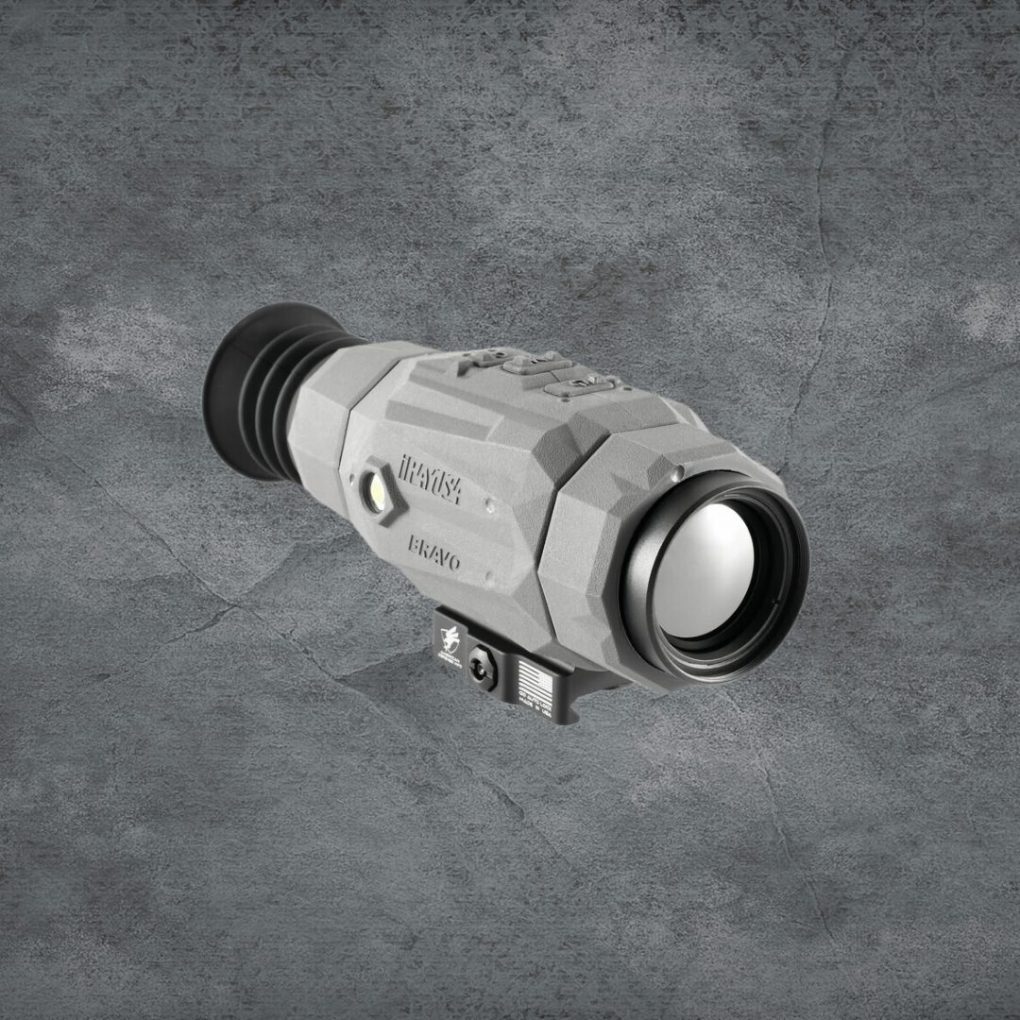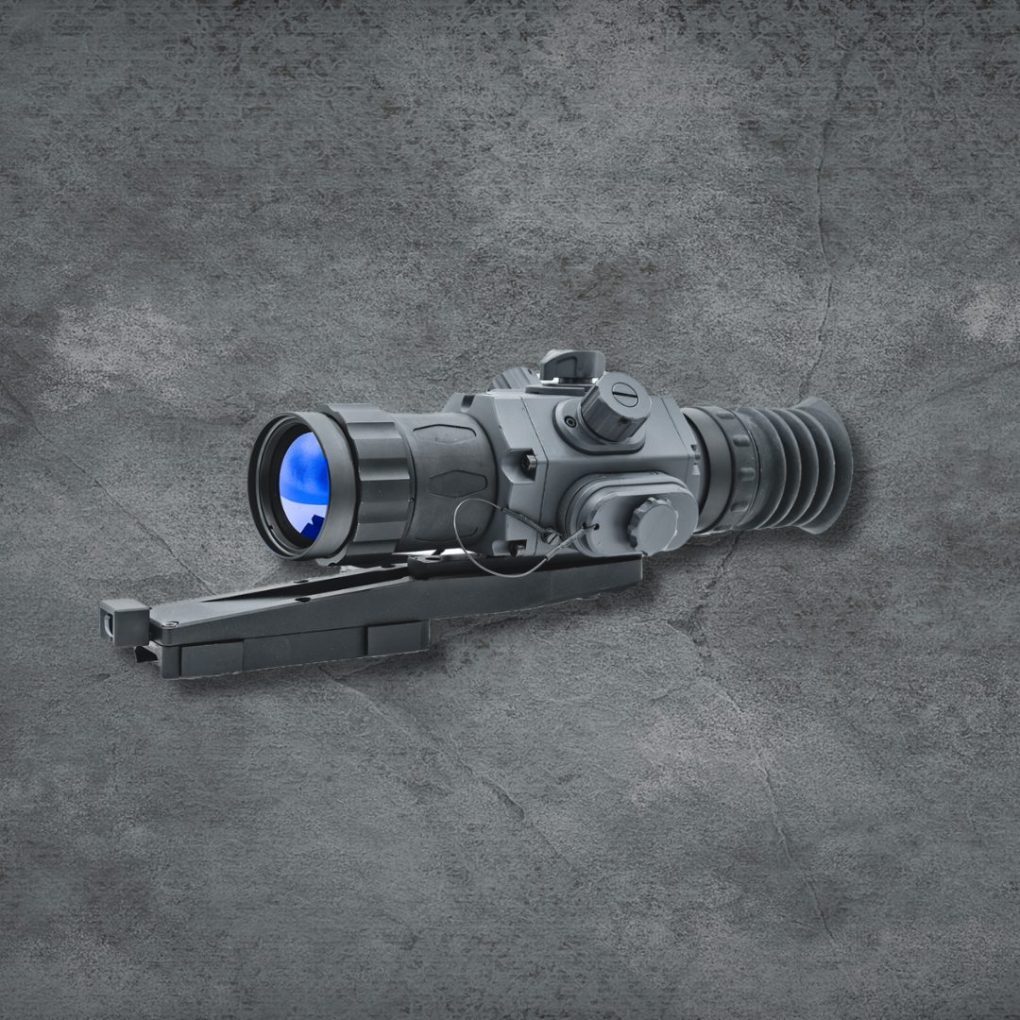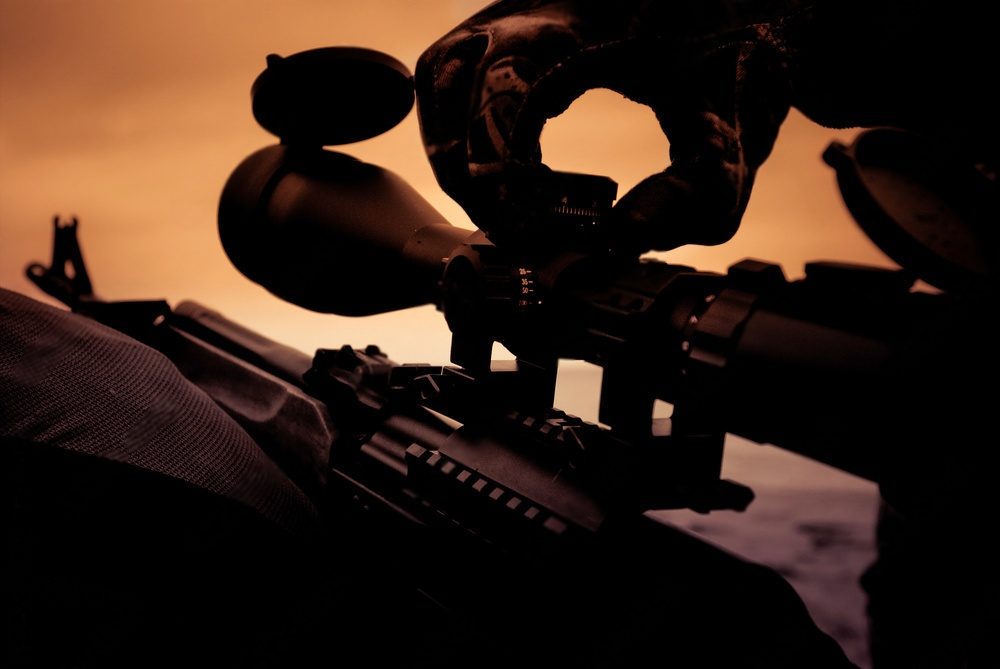In the dead of night, where danger and safety dance a fine line, you’ll find the power of infrared in tactical scopes tipping the scales.
As you navigate through the shadows, it’s the unseen wavelengths, those beyond the grasp of your natural vision, that become your most reliable allies. Infrared technology transforms obscurity into clarity, equipping you with the ability to detect, identify, and engage targets concealed by darkness or camouflage.
Yet, while the advantages may seem clear-cut, the intricate dance of utilizing infrared scopes is anything but simple. Join us as we explore the nuanced benefits and limitations of this game-changing technology, and consider how its evolution will continue to shape the future of tactical operations.
*Contact*
Call: (800) 674-7302
Mail: sales@steeleindinc.com
⇒ Before you start, take a look at our various articles that might interest you!
–Unlock the Dark: Enhance Night Perception with Vision Devices
–The Art Of Nighttime Navigation: How To Use Night Vision Devices For Outdoor Adventures
–Next-Level Night Vision: Advanced Usage Tips for Experts
–Night Vision Purging: How It Matters & Enhances Your NVDs
–AND more visit our blog!!
Key Takeaways
- Infrared technology in tactical scopes detects heat emitted by objects and translates it into visible images.
- There are different types of infrared scopes, including thermal imaging scopes and night vision scopes, each with their own applications and features.
- Infrared scopes have numerous benefits in tactical situations, such as enhancing situational awareness, providing a strategic advantage with heat signatures, and enabling 24-hour surveillance.
- Advancements in infrared technology for tactical scopes include miniaturization, integration with other spectral technologies, improved image processing algorithms, and the potential for augmented reality overlays.
Infrared Technology Explained
Infrared technology operates by detecting the heat emitted by objects, allowing tactical scopes to visualize targets in low-light or obscured conditions. You must understand that every object emits a certain amount of thermal energy as a function of its temperature. Infrared scopes translate this energy into a visible image, which can vary in resolution and clarity based on the device’s sensor quality and processing algorithms.
The core component of this tech is the infrared detector, typically a microbolometer, which reacts to infrared radiation. These detectors are composed of materials like vanadium oxide or amorphous silicon that change resistance as they absorb thermal energy. You’ll find that the subsequent electrical signals are processed to create a thermogram, a detailed temperature map, which is then translated into an electronic image.
Advanced scopes integrate sophisticated image enhancement features, such as edge detection and dynamic range adjustments, to refine the output. This results in crisper images, enabling you to discern finer details even under challenging conditions.
It’s critical to note that environmental factors like humidity, dust, and smoke can affect the performance of infrared scopes, but the latest models are designed to mitigate these issues with adaptive filtering and noise reduction technologies.
Types of Infrared Scopes
Diving into the realm of infrared scopes, you’ll encounter several types, each tailored to specific operational needs and environments. Primarily, you’ll differentiate between thermal imaging scopes and night vision scopes.
Thermal scopes detect heat signatures, translating thermal energy into visible images. They’re invaluable for identifying targets in complete darkness, through smoke, or obscured by foliage. These scopes come in various resolutions and detection ranges, with higher-end models offering greater image clarity and longer detection distances.
Night vision scopes, on the other hand, amplify available light to create a visible image. They rely on ambient light sources, such as the moon or stars, and often include an infrared illuminator to enhance performance in pitch-black conditions. Generational advancements categorize these scopes: Gen 1, Gen 2, Gen 3, and Gen 3+. Each successive generation offers improved resolution, signal-to-noise ratios, and operational life spans.
When selecting an infrared scope, consider the operational context. Thermal scopes excel in search and rescue or where identification is crucial, regardless of light availability. Night vision is better suited for situations where maintaining a low profile is paramount, as they don’t emit a detectable signature. Your choice hinges on mission requirements, environmental constraints, and engagement distances. Analyze these factors to determine the appropriate infrared scope for your tactical needs.
Benefits in Tactical Situations
Understanding the various types of infrared scopes equips you with the ability to discern their distinct tactical advantages in field operations. Infrared technology allows for enhanced situational awareness, a critical element in tactical engagements. You can detect heat signatures, often invisible to the naked eye, thereby gaining a strategic upper hand.
| Advantage | Emotional Response | Tactical Application |
| Stealth | Security | Covert operations |
| Night Vision | Confidence | 24-hour surveillance |
| Target Identification | Precision | Accurate threat assessment |
The stealth aspect of infrared scopes ensures that you remain undetected while observing the field. This feature elicits a sense of security as your position remains concealed from adversaries. Night vision capabilities imbue you with confidence, knowing that darkness does not impede your operational effectiveness. The ability to conduct 24-hour surveillance without compromise is invaluable in persistent threat environments. Lastly, accurate target identification is pivotal. The precision of infrared scopes in discerning potential threats maximizes your response efficacy, ensuring that each decision is informed and strategic. These benefits underscore the critical role that infrared scopes play in modern tactical scenarios, providing you with tools that can turn the tide of an engagement.
Limitations and Considerations
While infrared scopes offer significant tactical advantages, it’s crucial to consider their limitations and the implications for their use in field operations. You must be aware that these devices aren’t infallible and their effectiveness can be compromised under certain conditions.
To ensure you’re fully informed, consider the following key points:
- Environmental Constraints: Infrared scopes are sensitive to atmospheric conditions. Heavy fog, rain, or smoke can absorb or scatter the infrared radiation, reducing visibility and the scope’s range. Understanding weather patterns and having alternative sighting methods is essential.
- Power Consumption: These devices require a substantial power supply due to their sophisticated electronics. You’ll need to manage battery life carefully to maintain operational readiness, especially during extended missions.
- Potential Detection: While you can see others, they may also detect you if they possess similar technology. Infrared scopes emit a signature that can be identified by opposing forces using advanced detection systems. Operational security measures must be in place to mitigate the risk of your position being compromised.
Incorporating these considerations into your strategic planning ensures that while you leverage the benefits of infrared technology, you also mitigate its vulnerabilities, maintaining a tactical edge in the field.
Future of Infrared Scoping
Despite these challenges, advancements in infrared scoping technology continue to evolve, promising enhanced capabilities for future tactical operations. You’ll see miniaturization as a pivotal trend, with components shrinking in size but growing in efficiency and reliability. This progress will allow for more compact scopes that maintain, or even improve, the high-resolution image quality needed for precise targeting.
Integration with other spectral technologies is also on the horizon. You’ll witness infrared devices that combine with visible, laser, and near-infrared channels, enabling multispectral targeting and surveillance. This synergy will provide you with a comprehensive view of the battlefield, cutting through environmental obscuration like smoke and fog.
Further, anticipate substantial strides in image processing algorithms. These advancements will enhance target recognition and tracking, reducing the cognitive load on you in high-stress environments. You’ll benefit from faster and more accurate decision-making capabilities, with scopes that can distinguish between friend and foe more effectively.
Lastly, power consumption will see significant improvements. As you operate equipment for extended periods, energy efficiency becomes critical. Future scopes will likely employ advanced battery technology and more efficient infrared sensors, extending your operational time in the field without compromising on performance.
Some scope models offered by Steele Industries
IRAY USA BRAVO 384 3X-12X35 THERMAL RIFLE SCOPE

Description:
The iRay RICO Bravo 384 Scope is a robust thermal imaging device engineered to elevate the hunting and tactical shooting experience. It offers a 384×288 infrared resolution that enables users to detect heat signatures in complete darkness or through obstacles like smoke and foliage. With a built-in OLED display and a 50Hz refresh rate, the scope delivers crisp, real-time imagery for fast-moving targets, paired with advanced image processing for superior clarity and detail. The RICO Bravo includes a wide array of features such as multiple reticle patterns, a picture-in-picture function, and digital zoom, allowing for precise shot placement. Its durable construction and intuitive controls make it a user-friendly option for those seeking to enhance their nighttime shooting capabilities.
Contractor 640 TWS 3-12x

Description:
The Contractor 640 TWS 3-12x is a high-end thermal weapon sight designed for demanding environments and critical applications. Equipped with a powerful 640×512 thermal sensor, this scope provides exceptional image clarity and detail over various distances, with a zoom range of 3-12x that allows for both broad surveillance and precise targeting. Built to withstand the rigors of tactical use, it features a rugged housing that is both water-resistant and shockproof. The Contractor 640 TWS also comes with an array of advanced functionalities including multiple color palettes for better target contrast, reticle patterns for accuracy, and video output capabilities for recording. This thermal sight is ideal for professional contractors and law enforcement personnel who require reliable performance in low-light and no-light conditions.
Frequently Asked Questions
How Does Inclement Weather Affect the Performance of Infrared Tactical Scopes?
Inclement weather, such as fog or heavy rain, can reduce the infrared scope’s effectiveness by scattering or absorbing the IR wavelengths, thus diminishing your target’s clarity and detection range.
Can Animals or Other Wildlife Detect the Infrared Light Emitted by These Scopes?
You’re concerned if wildlife can detect infrared light from scopes. Generally, they can’t, as most animals don’t perceive infrared frequencies, ensuring your scope’s emissions remain undetectable to the targeted fauna.
What Are the Legal Implications of Using Infrared Scopes for Hunting or Surveillance in Different Jurisdictions?
You need to check local laws, as infrared scope use for hunting or surveillance varies by jurisdiction, potentially leading to legal issues if you’re not compliant with specific regulations and restrictions.
How Does the Use of Infrared Scopes Impact the Physical Health or Eyesight of the Operator Over Prolonged Periods?
You’ll find that prolonged use of infrared scopes can strain your eyes, potentially causing headaches or temporary vision issues, but there’s no evidence it causes permanent damage with proper use and breaks.
What Are the Best Practices for Maintaining and Cleaning Infrared Scopes to Ensure Longevity and Optimal Functionality?
To maintain and clean your infrared scope, regularly wipe the lenses with a microfiber cloth, avoid harsh chemicals, and store it in a dry, dust-free environment to ensure its optimal functionality.
Conclusion
You’ve seen that infrared technology in tactical scopes offers a significant edge in low-visibility conditions by detecting heat signatures. While the benefits are clear—from enhanced target acquisition to improved situational awareness—you must weigh these against limitations like range, weather dependence, and potential equipment bulk.
As advancements continue, expect more compact, powerful infrared scopes that further refine your tactical capabilities. Always assess your mission’s needs against the current state of infrared tech to optimize your operational effectiveness.


